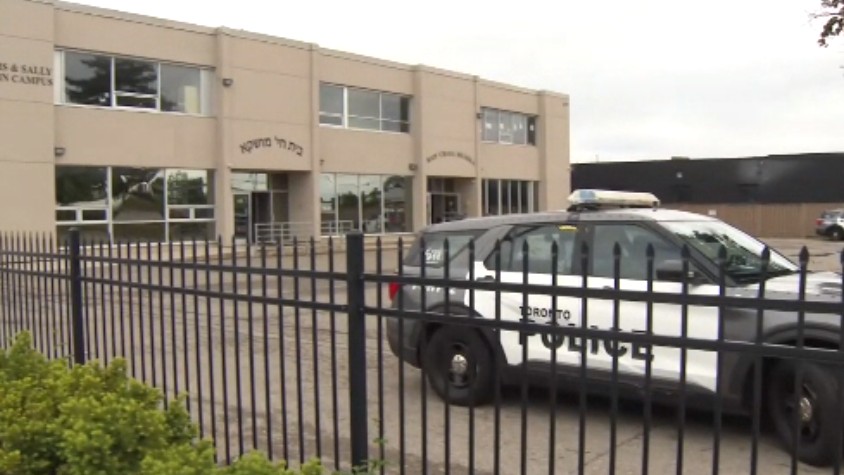TIMELINE: Ashley Smith 1988 – 2007
Posted December 19, 2013 1:45 pm.
This article is more than 5 years old.
The inquest into the death of Ashley Smith, 19, in her cell at the Grand Valley Institution in Kitchener, Ont., in October 2007, wrapped up on Thursday. Here’s a look back at her life and death.
Dec. 19, 2013: An inquest ruled the death of Ashley Smith, 19, a homicide. Smith had choked herself to death while in segregation at a women’s prison in Kitchener. The verdict of homicide in an inquest setting is not one of legal responsibility, but rather it’s a finding that another person contributed to her death.
The jury made 104 detailed recommendations for Correctional Service of Canada and said they should be audited.
Oct. 16, 2013: Don Head, commissioner of Correctional Service of Canada, testifies at the inquest. He had secretly tried to have his subpoena set aside, arguing he had no connection to Smith’s death. During his testimony, he urged jurors to avoid costly recommendations.
Oct. 1, 2013: Cindy Berry, the warden at Grand Valley Institution, denied ordering guards to refrain from entering the teen’s cell as long as she was still breathing.
Sept. 25, 2013: A former senior prison manager testified she wrote a flurry of memos critical of guards for rushing into Smith’s cell to cut ligatures from her neck. Joanna Pauline said the memos were sent to middle managers at the behest of Berry.
Sept. 9, 2013: Inquest resumes.
July 1, 2013: Inquest adjourns, to resume in the fall. Presiding coroner Dr. John Carlisle had heard from more than 50 witnesses including guards, a pilot, middle managers, psychologists, psychiatrists and nurses.
April 15, 2013: The inquest hears that Smith’s adoptive mother, Coralee Smith, refused to discuss her daughter’s parentage. Smith herself believed her sister — 19 years older than her — was really her biological mother, and Coralee Smith was in fact her grandmother.
April 9, 2013: Dr. Olajide (Jide) Adelugba, clinical director at the Regional Psychiatric Centre in Saskatoon, said Smith was challenging – but not unique.
“She was a difficult patient but there was no behaviour that she exhibited that I saw for the first time,” Adelugba told the five-women inquest jury.
“She was different, she was difficult, she was challenging. But she was not alone.”
Adelugba described the teen as a textbook case of antisocial personality disorder.
March 25, 2013: Psychiatrist Dr. Jeffrey Penn told the inquest into her death that only top-quality, sustained psychological care could have helped Ashley Smith overcome her extreme problems.
Feb. 21, 2013: Ashely Smith’s mother testifies the last time she saw her daughter, she was shocked at her appearance. Smith said she is convinced Ashley never meant to kill herself.
“I knew she didn’t commit suicide,” Smith said, fighting back tears. “Ashley was coming home.”
Smith said a family should not have to fight for five years to get a thorough airing of what went so tragically wrong with her daughter, who spent most of the last three years of her life in segregation.
“We’ve only come to an inquest. There should have been an inquiry,” she said.
“Who gives such orders? No one has stood up. The guards were there and they were hands on. Who passes the orders down?”
Jan. 24, 2013: A correctional officer who scrambled to cut a ligature from Smith’s neck testified he was reprimanded for his efforts.
Jan. 21, 2013: The jury sees the video that shows Smith’s death.
Jan. 17, 2013: Jurors visit Smith’s Kingston cell.
Jan. 14, 2013: Second inquest under Dr. John Carlisle begins hearing evidence.
Nov. 8, 2012: Bob Rae urges inquest into death.
Nov. 1, 2012: After Smith prison surveillance video screened, Prime Minister Stephen Harper calls conduct of prison authorities “completely unacceptable.”
May 16, 2011: First inquest under Dr. Bonita Porter starts but collapses after six hearing days.
Oct. 19, 2007: Smith dies in prison. Guards videotaped her death but did not intervene.
Sept. 24, 2007: Kim Pate, executive director of the Canadian Association of Elizabeth Fry Societies, visits with Smith in prison. She later testifies that the teen appeared in deep distress.
Aug. 31, 2007: Transferred again to Grand Valley Institution.
August 2007: Berry, the warden, e-mails Pauline, then the senior prison manager, telling her the prison would be “under a great deal of scrutiny” with Smith.
Aug. 27, 2007: Sent back to Nova.
Aug. 24, 2007: Sent to Central Nova Scotia Correctional Facility in Dartmouth, N.S.
July 26, 2007: Transferred again to Nova.
June 27, 2007: Transferred to Joliette Institution for Women in Joliette, Que.
June 19, 2007: Sent back to Grand Valley Institution.
June 11, 2007: Sent to St. Thomas Psychiatric Hospital in St. Thomas, Ont.
May 10, 2007: Moved to Grand Valley Institution in Kitchener, Ont.
April 12, 2007: Transferred from RPC to Pinel Institute psychiatric hospital in Montreal.
April 2007: RCMP pilot Cpl. Stephane Pilon, who flew the plane from Saskatoon to Montreal, later defended his decision to restrain Smith with duct-tape for the flight. The video was shown in court after a lengthy battle
Smith’s family had long demanded the video be made public, but Correctional Service Canada fought its release every step of the way.
Dec. 20, 2006: Admitted to the Regional Psychiatric Centre, Saskatoon.
Within days of her arrival from Nova Institution in Truro, N.S., she started tying ligatures around her neck, sparking a cycle of forceful interventions, Peter Guenther, former executive-director of the Regional Psychiatric Centre in Saskatoon, testified during the inquest.
Oct. 31, 2006: Smith, 18, moves from provincial youth custody in New Brunswick to the federal adult Nova Institution in Truro, N.S.
As a teen, she was initially given a 90-day sentence for throwing crab apples at a postal worker. But in-custody incidents kept her behind bars.
Jan. 29, 1988: Smith is born in New Brunswick.








